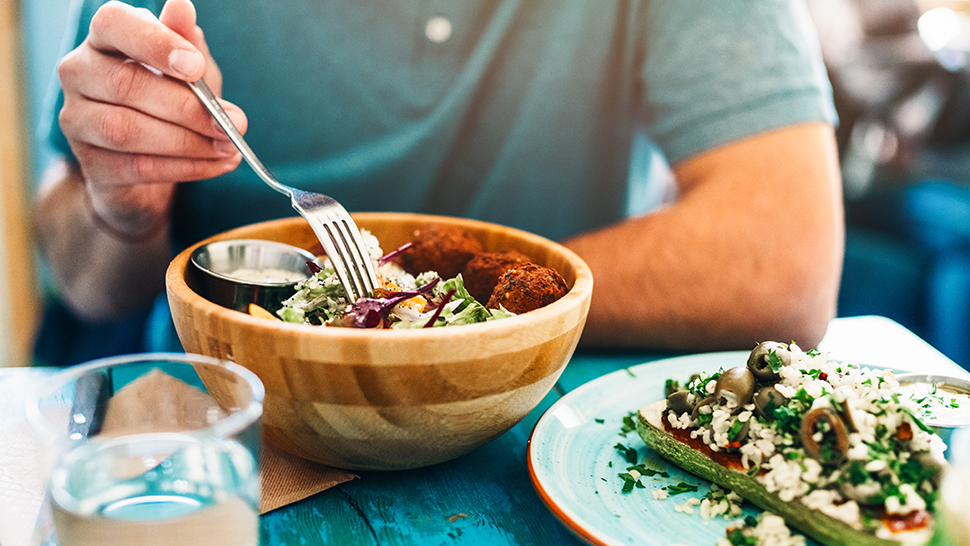
Flexitarian, sometimes vegetarian, plant-forward, omnivore who likes plant-based meals — whatever you want to call such a diet (or not), eating some vegetarian or vegan meals benefits your health and the environment. Research has shown vegan and vegetarian diets may support heart health, reduce the risk of some cancers, and provide better blood sugar control for those with type 2 diabetes. Pair that with the jaw-dropping estimate that if every American went meatless just one more meal per week, it would be the environmental equivalent of taking over 19 million cars off the road — and it’s hard to ignore the signs telling us to reduce the amount of animal foods we consume.
But when it comes to health, it’s not just about cutting meat. The benefits of eating more plant-based foods, including vegetables, fruits, beans, nuts, seeds, and whole grains, are wide-ranging regardless of whether you eat animal foods on occasion. Plant-rich diets are often higher in important nutrients such as fiber, vitamins C and E, folate, potassium and magnesium. So, even if you’re not interested in giving up meat completely (we hear you!), consider these small changes you can make to better your body and the planet.
Make one more meal vegetarian. Choose one meal per week that you and your family will commit to going meatless. Make it a fun challenge to find a delicious vegetarian or vegan recipe that the whole family will enjoy. Need inspiration? Check out our recipe database full of plant-based meals.
Try blending. Think about reducing, not removing, your favorite animal foods from your plate. Instead of cutting it completely, consider blending beef or turkey with mushrooms or lentils, or serve a smaller portion of fish or chicken and add chickpeas or edamame to your grain bowl or salad to boost the protein. Even choosing to skip the cheese on a sandwich can make a difference.
Flip your plate. Build your plate by starting with the plants, then consider animal protein for your side — instead of as the main event. If you fill your plate with fiber-rich vegetables and whole grains, plus some protein-packed beans and legumes, we promise that you will be fully satisfied with a much smaller portion of meat or fish.
Swap it out. Often animal foods are used to enhance flavor and texture, so consider some plant-based swaps you can make to bring more plants to your plate. Can avocado or silken tofu be used as a base for a creamy dressing or sauce? Can you sprinkle your salad with hemp seeds instead of cheese? How about using blended beans to thicken and add creaminess to your soup?
To reap the benefits, you don’t have to take an all-or-nothing approach. To start, choose one change that is realistic for you and see how it goes. You never know — you may find you crave more plants and that one small change leads to two or three more!